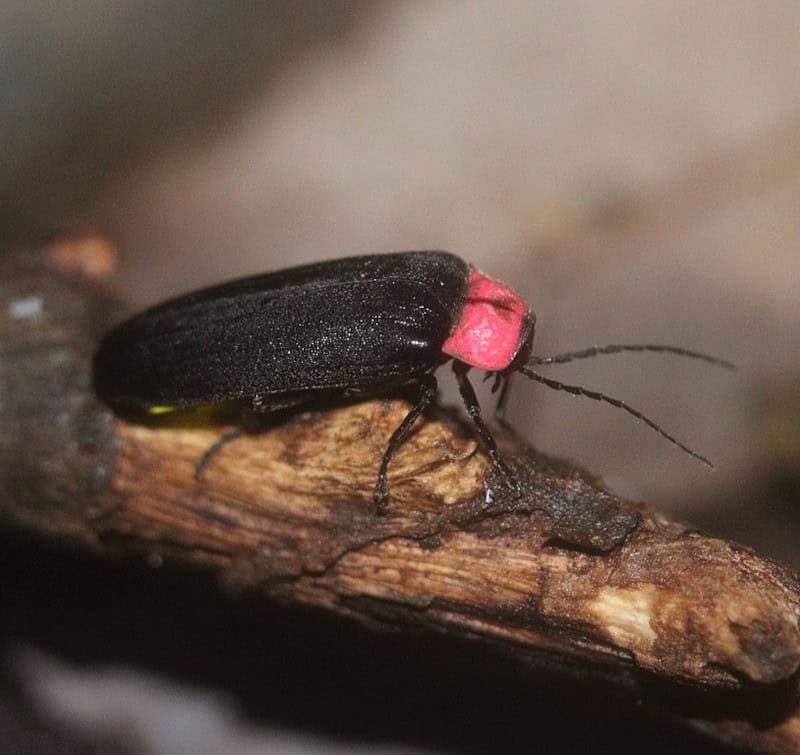
Genji-botaru Facts
- The term of Genji-botaru represents the english language translation of the Japanese name for this brilliant creation of Nature and evolution. For the moment, the invertebrate has no other generally accepted english language alternate common name.
- Within scientific circles, however, it’s better known by its formal moniker. That, though, is an extremely difficult title for the layperson to pronounce. That’s due to the fact that the insect holds the tongue-twisiting technical name of Nipponoluciola cruciata.
- The amazing Arthropod received that official name due to the efforts of the Russian entomologist Victor Ivanovich Motschulsky. This noted researcher accomplished the first official recognition of it as a separate and distinct species in the year 1854.
- For the moment, the remarkable Genji-botaru appears to be maintaining a population base that’s both stable and sufficient. That fortunate trend also seems to hold true throughout its range. The IUCN, therefore, currently has no listing for it on the Red List.
- Nonetheless, it faces the same potential threats to its existence as other species around the world. These include such perils as habitat degradation and outright loss. It also now faces the same ongoing threat of climate change as most other species do.
Related Articles
Genji-botaru Physical Description
The captivating Genji-botaru garners much appreciation from those who enjoy beautiful insects. It does not do so, however, for any reasons pertaining to physical size. That’s because, much like related species around the world, it’s a diminutive invertebrate.
Much like those same genetic cousins, it also displays a certain degree of the physiological characteristic of sexual dimorphism. In its specific case, though, this trait manifests itself in terms of pure size. More precisely, females attain a larger average size than males.
Mature females of the small creature attain total lengths averaging approximately 0.59 – 0.73 in (15 – 18.6 mm). The bodies of the surprising insects develop as highly elongated in nature. Among the females, an average body width equals roughly 0.2 – 0.24 in (3.0 – 5.0 mm).
Males, meanwhile, develop much smaller physical dimensions. These reach an average total length measuring between 0.41 – 0.65 in (10.5 – 16.5 mm). They’re also noticeably slimmer than females, having an average body width equaling only 0.12 – 0.2 in (3.0 – 5.0 mm).
Otherwise, the genders of the Genji-botaru appear quite similar, with only minor differences in color patterns. The head of both develops a bright, eye-catching pink shade. It also typically displays a somewhat thin black marking central to the head itself, like a line.
The underside of the male body presents as brown and light yellow. In the female, though, this aspect presents as yellow, brown, and reddish-pink in color. Two long, thin, black antennae appear on the head, too. The insect also has relatively large, well developed eyes.
- Kingdom: Animalia
- Phylum: Arthropoda
- Class: Insecta
- Order: Coleoptera
- Family: Lampyridae
- Genus: Nipponoluciola
- Species: N. cruciata
Genji-botaru Distribution, Habitat, and Ecology
The remarkable Genji-botaru evolved as native to a limited region of the globe. That precise region, however, might come as a surprise to some people. That’s because this marvel of Nature developed as native to a very small, and specific, portion of Asia.
More specifically, this marvelous invertebrate only appears to live on the small island nation of Japan. One report, still unconfirmed, placed a single sighting of the species in Korea, as well. For the moment, no proven evidence of it ever living outside of its current range exists.
The creature also displays decided preferences for its choice of habitat. These same preferences, though, severely limit its zone of habitation. That’s because they’re both very specific and unusual. It’s unknown if this is a recent adaptation to human presence.
For the moment, the Arthropod appears to only live is small ditches placed relatively near streams. Its larvae develop as largely aquatic in nature, so that’s somewhat understandable. It also requires the presence of pebbles or mud at the bottom of either site.
Though the larvae of the Genji-botaru are aquatic in nature, they remain unable to swim. Despite this, they manage by crawling along the bottom of those streams. They feed almost exclusively on a species of locally prevalent freshwater snail, the Semisulcospira libertina.
The adult specimens of this species typically emerge from underground in June. Reaching that stage, though, requires roughly an entire year. Once mature, however, their lifespan measures around 3 weeks. During that period, the mature individual does not feed at all.
Species Sharing Its Range
Asian Giant Hornet
Check out our other articles on 4 Remarkably Evolved Reptiles, Bluespotted Ribbontail Ray, Vintgar Gorge, Golden Jackal, Wheel Flower, Alligator Snapping Turtle, Axolotl, Orange-belted Bumblebee
